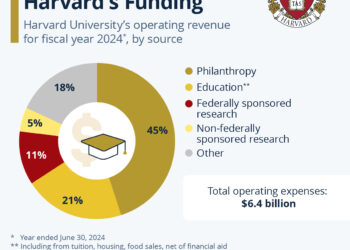Understanding Gender Disparities in Lower Secondary Education Completion
Education is a fundamental human right and a vital component for personal and societal development. Over the past few decades, global education efforts have made significant strides, particularly in increasing female educational participation. However, disparities still exist, especially regarding gender gaps in educational attainment. This blog explores the metrics of gender completion rates in lower secondary education, shedding light on the challenges and achievements in this area.
The Importance of Lower Secondary Education
Lower secondary education represents a crucial stage in a child’s educational journey, typically encompassing the completion of eighth grade around the ages of 13 to 14. This level serves as a foundational period where students not only absorb critical academic knowledge but also develop essential life skills. Ensuring that all children, regardless of gender, complete this stage is vital for their continued education and future opportunities.
Global Trends in Education and Gender
According to the World Bank, significant improvements in education have been made internationally over the last fifty years. Increased enrollment among girls has been a hallmark of these improvements, demonstrating a positive shift in societal attitudes toward female education. However, challenges remain, highlighting the need for ongoing efforts to close the gender gap in education.
Regional Disparities in Educational Attainment
Despite global advancements, notable disparities persist among regions. Students’ completion rates of lower secondary school are influenced by a variety of factors, including socioeconomic status, cultural norms, and government policies. The recent data provided by the World Bank emphasizes how these factors contribute to the varying rates at which boys and girls finish their education.
A Closer Look at Gender Gaps in Lower Secondary School Completion
The World Bank’s recent data provides insights into the completion rates of lower secondary education across 169 countries and territories, revealing significant gender disparities.
Countries with a Gender Gap Favoring Boys
In some countries, a notable trend shows that fewer girls complete lower secondary education compared to boys. The data from Afghanistan is particularly alarming; in 2019, the gender gap for lower secondary school completion stood at -30.4 percentage points in favor of boys. Other countries exhibiting similar trends include:
- Iceland: -5.2 percentage points (2021)
- Albania: -8.4 percentage points (2023)
- Mauritius: -9.8 percentage points (2023)
- Democratic Republic of the Congo (DRC): -12.1 percentage points (2020)
These statistics highlight regions where girls are still facing significant barriers to complete basic education, often linked to sociocultural influences and systemic inequalities.
Countries with a Gender Gap Favoring Girls
Interestingly, the data also indicates that in some regions, boys are underrepresented in educational attainment. The Cayman Islands, for instance, reported a gender gap of 34.5 percentage points in 2023, where boys completed lower secondary education at much lower rates than girls. Other areas showcasing this trend include:
- Tuvalu: 29.3 percentage points (2023)
- Sierra Leone: 21.5 percentage points (2021)
- Palau: 21.1 percentage points (2023)
- Suriname: 20.9 percentage points (2021)
This underrepresentation of boys in education may reflect a variety of challenges, including economic pressures, cultural expectations, or even shifts in educational priorities.
Achieving Educational Parity
While many countries still struggle with significant gender gaps, it is encouraging to note that 22 economies report near parity within a margin of +1/-1 percentage points. This includes four nations with complete gender parity:
- Turkey
- Peru
- Azerbaijan
- Hong Kong
These examples serve as a model for other nations, illustrating that educational equity is attainable through dedicated policies and cultural shifts.
The Impact of Sociopolitical Contexts
When analyzing trends in educational attainment, it is essential to consider the sociopolitical contexts of different countries. For example, Afghanistan’s drastic decline in female educational access post-2021 highlights how quickly progress can reverse due to political changes. Such scenarios underscore the need for continuous advocacy for educational rights, particularly for girls and marginalized groups.
Conclusion
Moving forward, comprehensive efforts aimed at addressing these gender gaps in education are crucial. Promoting policies that support equal educational opportunities, coupled with societal change, is necessary to ensure all children can complete their lower secondary education, paving the way for future generations.





